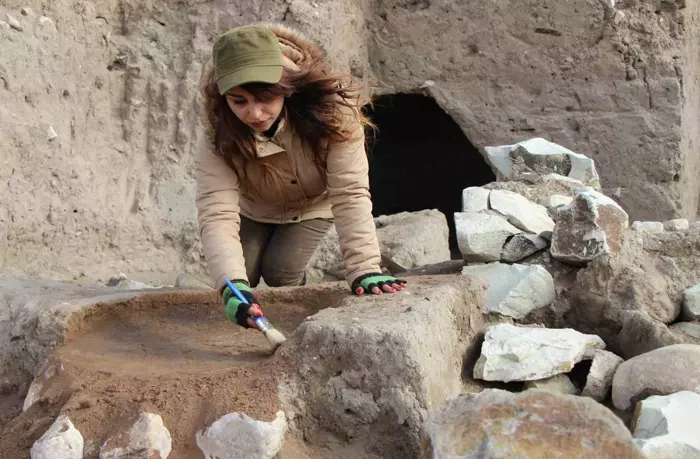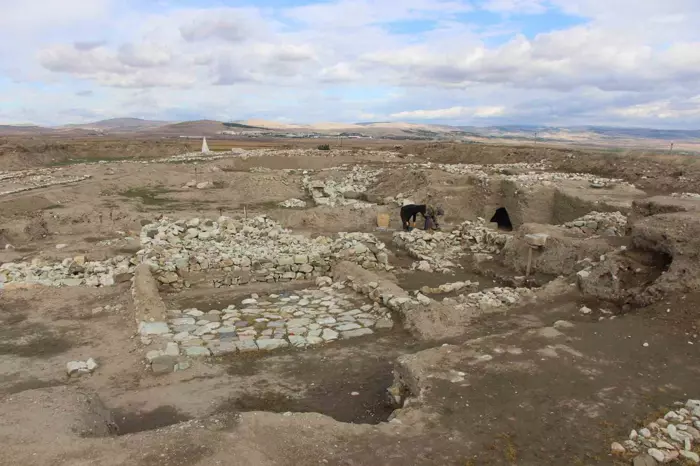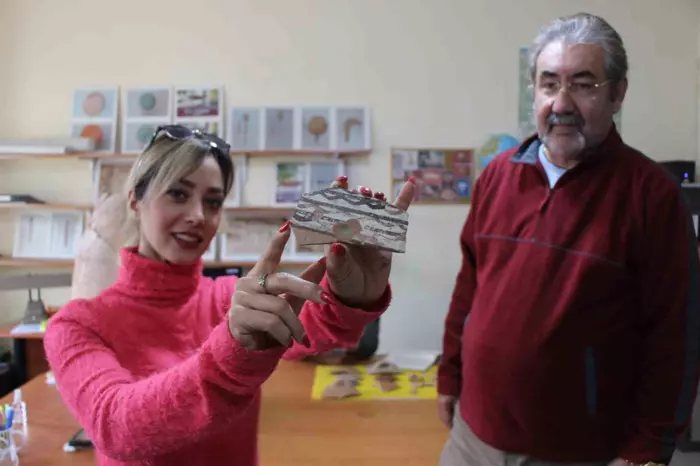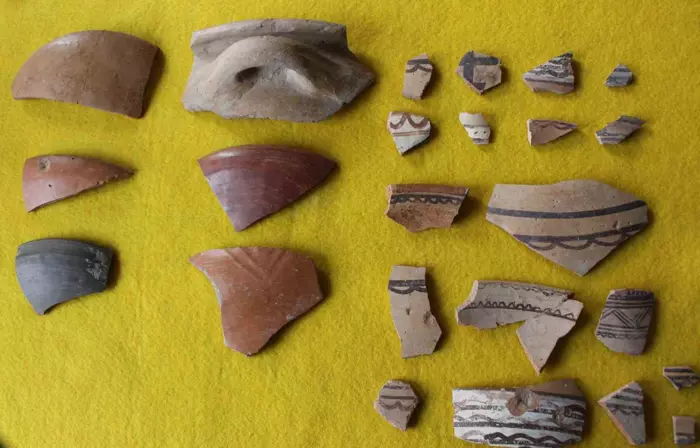
The 2600-Year-Old Altar Unearthed at Oluz Mound Will Shed Light on the History of Ancient Near Eastern Religion
The 2600-year-old Median period altar discovered in Oluz Höyük, which has a history of 6000 years, will shed light on the religious history and religious archeology of Asia Minor.
Oluz Höyük is located 3 kilometers south of the Amasya-Çorum highway, about 2 kilometers northwest of Gözlek Village, and approximately 5 kilometers east of Toklucak (formerly Oluz) Village.
Oluz Mound was discovered during surface surveys in 1997. Since then, the excavations have been led by Professor Dr. Şevket Dönmez, a faculty member of the Department of Protohistory at Istanbul University.

Reminding us of the previously discovered Kubaba altar from the Late Phrygian period in the same area, Excavation Director Professor Dr. Şevket Dönmez mentioned, “The emergence of altars and temples related to the cult of fire during both the Medes and Persians seems to significantly impact the history of ancient Near Eastern religion and religious archaeology.”
📣 Our WhatsApp channel is now LIVE! Stay up-to-date with the latest news and updates, just click here to follow us on WhatsApp and never miss a thing!!
At Oluz Mound, artifacts dating back 2500 years from the Persian period, including remnants of a fire temple, have been unearthed. Similarly, at an altar belonging to the Iranian-origin Medes Kingdom, which reigned over Anatolia up to the Kızılırmak River in 590 BC for 40 years, evidence of a fire temple was discovered.

Last year, upon encountering ceramics believed to belong to the Medes, we progressed our research in this field,” explained Professor Dr. Dönmez. “They added a hearth related to the fire cult to the altar. They also added a tower-like structure to the eastern side of the altar. The emergence of altars and temples related to the cult of fire during both the Medes and Persians seems to significantly impact the history of ancient Near Eastern religion and religious archaeology,” he stated.

Oluz Mound seems to have served as a sacred center dating back 3500 years to the Hittite period,” mentioned Professor Dr. Dönmez. “Five seasons ago, we discovered a bull figurine believed to be from the Hittites. The presence of this bull figurine indicated the existence of a temple to us. Most likely, a Hittite temple dedicated to the Storm God lies beneath the current layers of the Phrygian and Persian periods. Through our 17 years of excavation, we observe that Oluz Mound was a sacred city during the Hittite, Phrygian, Medes, and Persian periods,” he elaborated.
You may also like
- A 1700-year-old statue of Pan unearthed during the excavations at Polyeuktos in İstanbul
- The granary was found in the ancient city of Sebaste, founded by the first Roman emperor Augustus
- Donalar Kale Kapı Rock Tomb or Donalar Rock Tomb
- Theater emerges as works continue in ancient city of Perinthos
- Urartian King Argishti’s bronze shield revealed the name of an unknown country
- The religious center of Lycia, the ancient city of Letoon
- Who were the Luwians?
- A new study brings a fresh perspective on the Anatolian origin of the Indo-European languages
- Perhaps the oldest thermal treatment center in the world, which has been in continuous use for 2000 years -Basilica Therma Roman Bath or King’s Daughter-
- The largest synagogue of the ancient world, located in the ancient city of Sardis, is being restored











Leave a Reply